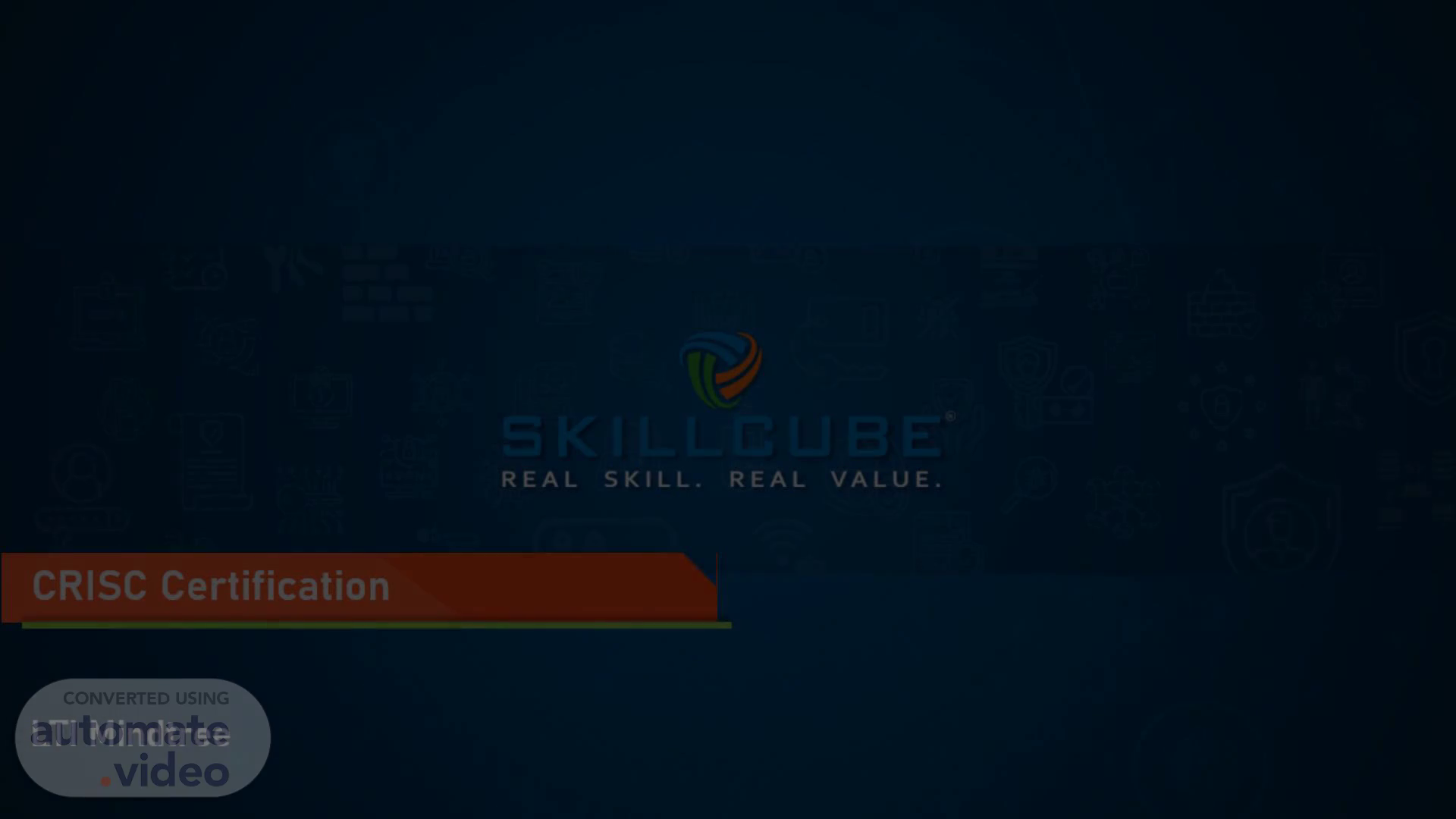Scene 1 (0s)
[Audio] CRISC Certification LTI Mindtree. LTI Mindtree.
Scene 2 (8s)
[Audio] CRISC Certification Day 2 Introduction to Cyber Security.
Scene 3 (19s)
[Audio] CRISC Course Overview Certified in Risk and Information Systems Control (C-R-I-S-C) training course provides delegates with an in depth understanding of various business risks to gain practical knowledge as well as skills to implement appropriate IS controls in an organization. By attending our C-R-I-S-C training course, you will become familiar with how to achieve business objectives via the design, implementation, observation, and preservation of risk based, competent information security disciplines. Our highly experienced risk management experts have tailored this C-R-I-S-C training course, especially to meet the needs and demands of the (I-T ) industry. Holding in depth knowledge of CRISC's topics may help you to pass your exam easily. Day 2 Introduction to Cyber Security.
Scene 4 (1m 8s)
[Audio] Steps to Get Certified CRISC. Steps to Get Certified CRISC.
Scene 5 (1m 18s)
[Audio] Professional Benefits from CRISC. Professional Benefits from CRISC.
Scene 6 (1m 25s)
[Audio] What are the C-R-I-S-C Domains? Below Are The Key Domains Domain 1 – Governance Domain 2 – It Risk Assessment Domain 3 – Risk Response And Reporting Domain 4 – Information Technology And Security Supporting Tasks.
Scene 7 (1m 43s)
[Audio] Domain 1 – Governance The governance domain interrogates your knowledge of information about an organization’s business and (I-T ) environments, organizational strategy, goals and objectives, and examines potential or realized impacts of (I-T ) risk to the organization’s business objectives and operations, including Enterprise Risk Management and Risk Management Framework. A—organizational Governance B—risk Governance A—ORGANIZATIONAL GOVERNANCE B—RISK GOVERNANCE Organizational Strategy, Goals, and Objectives Organizational Structure, Roles and Responsibilities Organizational Culture Policies and Standards Business Processes Organizational Assets Enterprise Risk Management and Risk Management Framework Three Lines of Defense Risk Profile Risk Appetite and Risk Tolerance Legal, Regulatory and Contractual Requirements Professional Ethics of Risk Management.
Scene 8 (2m 44s)
[Audio] Domain 2 – It Risk Assessment This domain will certify your knowledge of threats and vulnerabilities to the organization’s people, processes and technology as well as the likelihood and impact of threats, vulnerabilities and risk scenarios. A—IT risk IDENTIFICATION B—IT risk analysis AND EVALUATION Risk Events (for example, contributing conditions, loss result) Threat Modelling and Threat Landscape Vulnerability and Control Deficiency Analysis (for example, root cause analysis) Risk Scenario Development Risk Assessment Concepts, Standards and Frameworks Risk Register Risk Analysis Methodologies Business Impact Analysis Inherent and Residual Risk.
Scene 9 (3m 31s)
[Audio] Supporting Tasks 1 Of 2 Collect and review existing information regarding the organization’s business and (I-T ) environments. Identify potential or realized impacts of (I-T ) risk to the organization’s business objectives and operations. Identify threats and vulnerabilities to the organization’s people, processes and technology. Evaluate threats, vulnerabilities and risk to identify (I-T ) risk scenarios. Establish accountability by assigning and validating appropriate levels of risk and control ownership. Establish and maintain the (I-T ) risk register and incorporate it into the enterprise wide risk profile. Facilitate the identification of risk appetite and risk tolerance by key stakeholders. Promote a risk aware culture by contributing to the development and implementation of security awareness training. Conduct a risk assessment by analyzing (I-T ) risk scenarios and determining their likelihood and impact. Identify the current state of existing controls and evaluate their effectiveness for (I-T ) risk mitigation. Review the results of risk analysis and control analysis to assess any gaps between current and desired states of the (I-T ) risk environment..
Scene 10 (4m 51s)
[Audio] CRISC Certification Requirements The members, volunteers, and experts in I-S-A-C-A community are directed by our promise and purpose, which describe the spirit what we do and who we are. Following requirements must be fulfilled by the applicants to become C-R-I-S-C Certified: Successfully Complete the C-R-I-S-C Examination: Individuals those are interested in risk and information control, examinations are open for them and for everyone. Adhere to the Code of Professional Ethics: To guide C-R-I-S-C designated and individual conduct holders or members, I-S-A-C-A settle to code of professional ethics. Adhere to the Continuing Professional Education (C-P-E--) Program: The objectives of the continuing education program are to maintain and differentiate an individual's competency. Demonstrate the Required Minimum Work Experience: At least 3 years of collective work experience is needed for certification with execution, the tasks of a C-R-I-S-C professional..
Scene 11 (5m 51s)
[Audio] Career Paths after CRISC. Career Paths after CRISC.
Scene 12 (6m 0s)
[Audio] Frequently Asked Questions 1 of 3 What is CRISC? C-R-I-S-C (Certified in Risk and Information Systems Control) is an enterprise risk management certification for (I-T ) professionals. It helps them to acquire skills and knowledge for identifying and managing enterprise (I-T ) risk as well as implementing and maintaining information systems controls. What are the benefits of Certified in Risk and Information Systems Control (C-R-I-S-C)? C-R-I-S-C certification helps individuals to build their risk management knowledge and skills. Holding CRISC’s four domains knowledge indicates your expertise as a risk professional and increases your value for any company. Who can get benefits by having a Certified in Risk and Information Systems Control (C-R-I-S-C) training course? Our Certified in Risk and Information Systems Control (C-R-I-S-C) training course gives delegates an insight into enterprise risk management, which can be beneficial for anyone who is in the (I-T ) profession. However, Business Analysts, Compliance Professionals, Control Professionals, (I-T ) Professionals, Project Managers, and Risk Professionals can take more advantage from this training in their job role..
